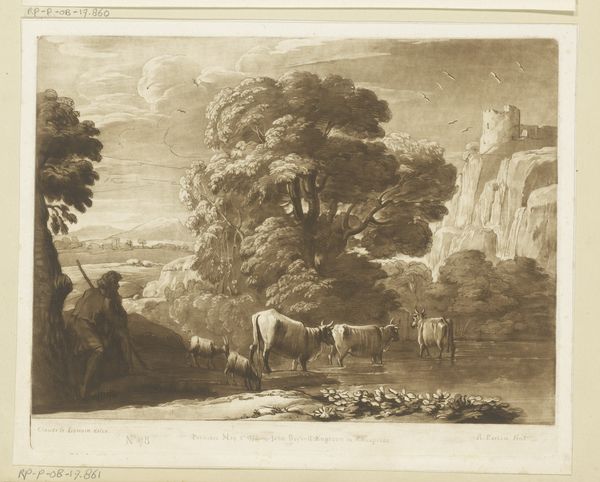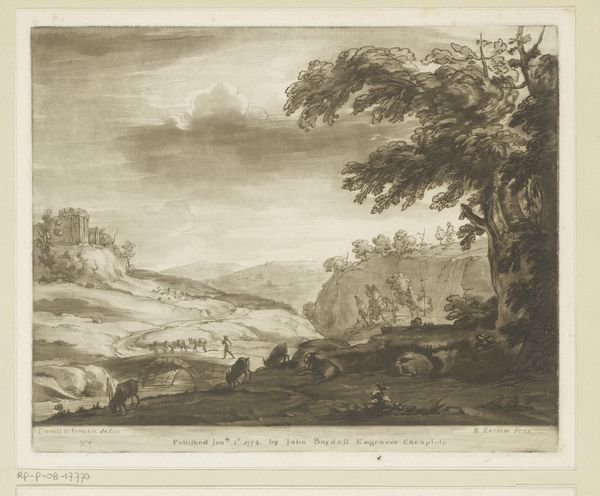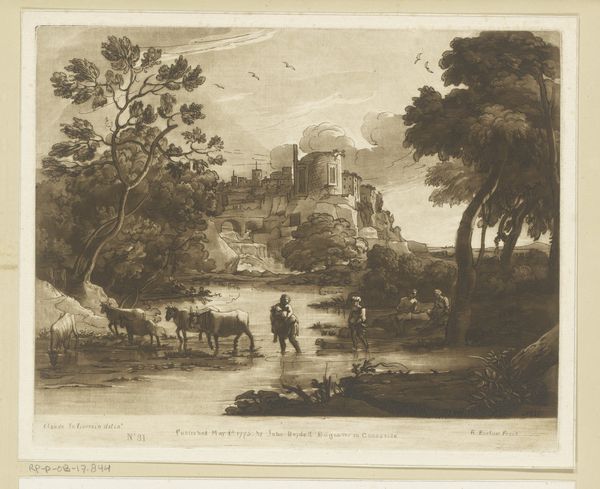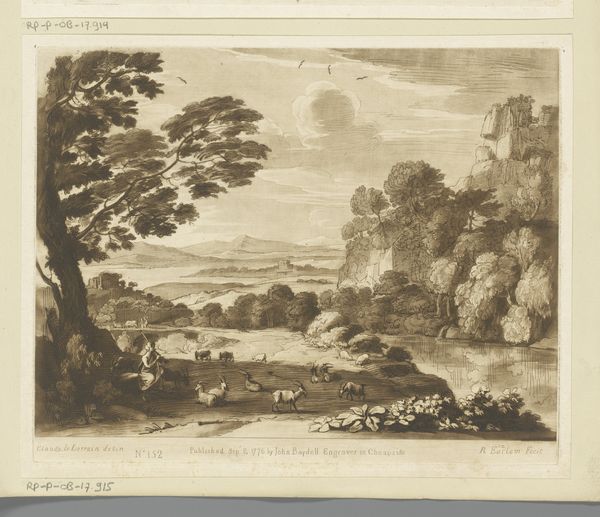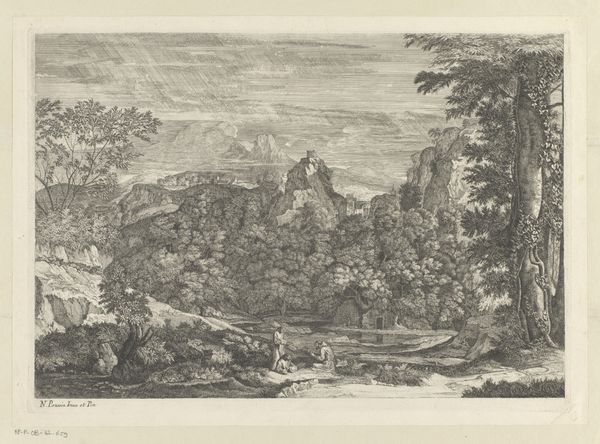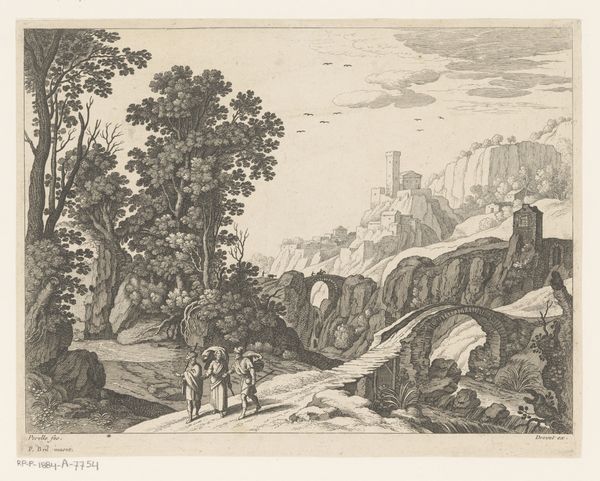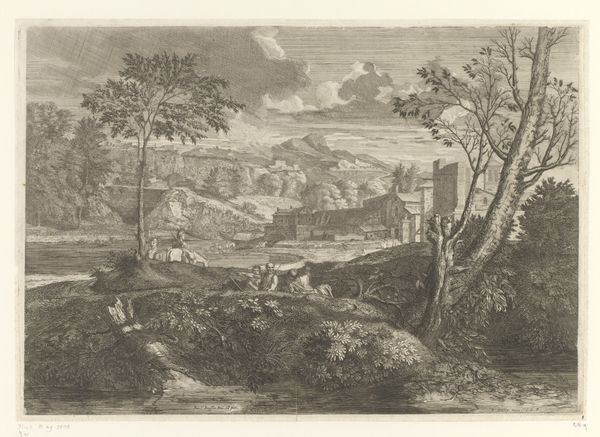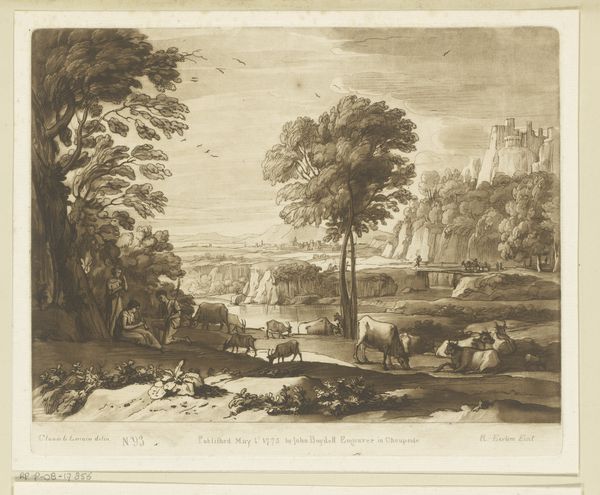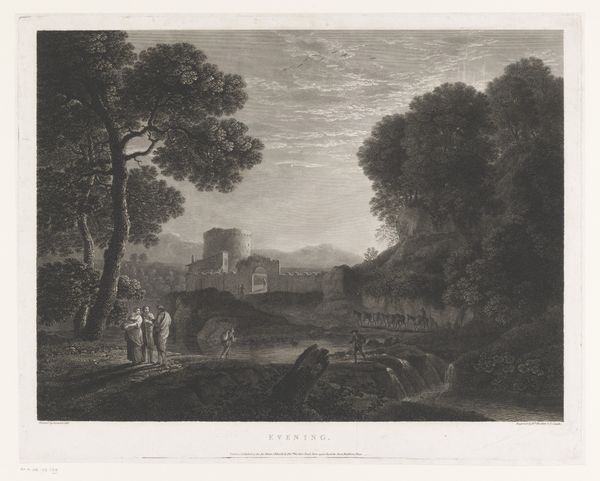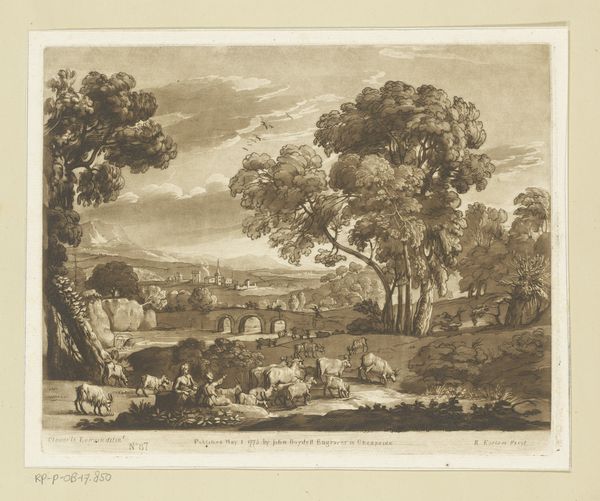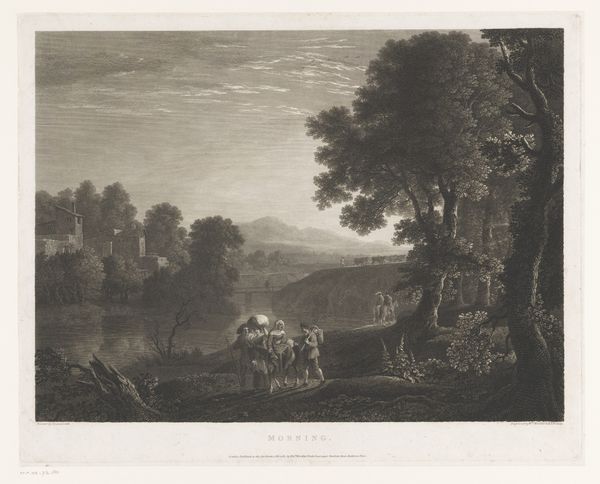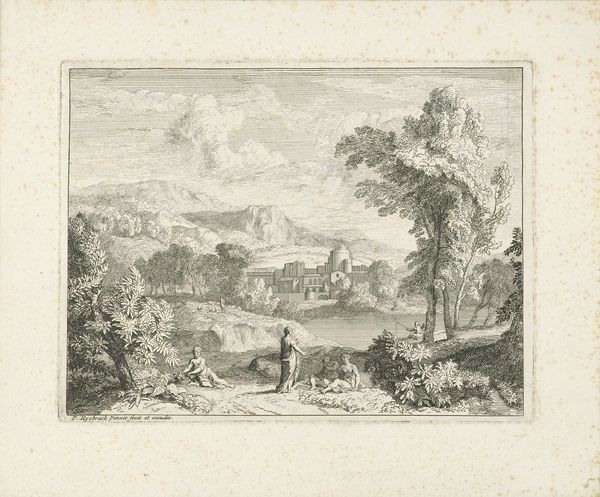
The Castle above the Meadows (Liber Studiorum, part II, plate 8) 1808
0:00
0:00
drawing, print, etching
#
drawing
# print
#
etching
#
landscape
#
romanticism
Dimensions: plate: 7 1/16 x 10 5/16 in. (17.9 x 26.2 cm) sheet: 8 1/8 x 11 1/2 in. (20.6 x 29.2 cm)
Copyright: Public Domain
Editor: This is "The Castle above the Meadows" by J.M.W. Turner, dating back to 1808. It's an etching and mezzotint, and it gives me such a feeling of pastoral tranquility juxtaposed with this imposing structure looming in the background. What strikes you about this piece? Curator: What I see here, and what I think is central to understanding Turner's work, is the collision of power structures with everyday life. How does the presence of the castle—a symbol of authority, of feudal power—impact the landscape and those figures within it? Consider the cattle, the peasant figure; their quiet existence plays out beneath this silent, watchful monolith. Editor: So, it’s more than just a pretty landscape. Curator: Exactly. Turner was deeply engaged with the socio-political context of his time. Romanticism wasn't simply about idyllic scenes. It questioned the established order, often looking back to history to critique the present. Ask yourself, what did a castle represent in 1808? Not just physical protection, but also inherited privilege and control. The natural world and humanity are forced into subservience. Editor: I hadn't considered it that way. I was focused on the aesthetic beauty. Curator: The beauty is there, undeniable. But it serves to highlight the disparities. Look at how the light falls; the castle is prominent, drawing our eye, yet the figures in the foreground exist in shadow. Is that shadow literal, or symbolic? Turner’s ability to infuse his work with layers of social commentary makes his landscapes powerfully evocative critiques. Editor: It makes you wonder who truly benefits from this 'tranquility.’ Thanks, I’ll definitely look at Turner differently now. Curator: And that's the point, isn't it? Art should prompt us to question, to re-evaluate the narratives we've inherited.
Comments
No comments
Be the first to comment and join the conversation on the ultimate creative platform.
